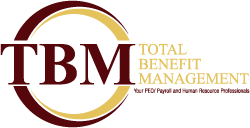- Total Benefit Management

Buying Into These Myths Can Make for Bad Hiring Decisions
May 21, 2019
How to Create a Winning Company Culture
June 4, 2019This article comes from Entrepreneur.
The Future of Work Relies on Your Developing These 5 Team Skills
Leaders who want to be forward-thinking — or risk seeing their organizations fall behind — should make sure their employees:
Super skill 1: get credit
Cornerstone defines this skill as “workers [getting] ‘credit’ for every skill they build and develop and [carrying] those credits into new positions across their careers.”
If leaders want to retain employees with such diverse skills, they need to provide a variety of in-house learning experiences — and give employees credit for their efforts.
Cornerstone, for example, has a badge system to give employees just such credit for their efforts. Employees earn badges and receive feedback in both formal and informal learning settings. They can even receive accolades from their peers.
Takeaway: Even without a formal system, leaders can easily give employees credit — by endorsing their skills on LinkedIn, for example. At my company, we’ve developed specialty skills tracks, and employees can earn an extra $3,000 annually for each one they complete.
Super skill 2: Upgrade their digital fluency
Unlike an understanding of how to operate the latest technology, digital fluency is about finding new ways to utilize these tools.
Take Boston Children’s Hospital, for example. In 2016, the organization developed the first healthcare-based Alexa service, KidsMD. It allows parents to ask Alexa basic questions about their child’s health.
The AI-based technology was not meant to be used by or replace healthcare professionals. Rather, it’s a new way for Boston Children’s Hospital employees to share their knowledge and serve people beyond hospital walls.
Takeaway: At your company, schedule a day once a month when employees can learn about and discuss new technologies. By brainstorming together, employees potentially can find additional uses for tech already at their fingertips.
Super skill 3: Connect the dots
In the best workplace environments, teams share everything. But for this to be effective, employees need to know how to connect the dots. When employees see what information, resources and skills across the entire organization are available to them, they perform their individual roles better.
At the Chicago-based staffing and employment agency Addison Group, leaders provide monthly training sessions open to all employees. During these times, employees across the country share the best practices they’ve discovered.
Manager of talent development, Michelle Tasevski, said via email that this allows employees at all levels and verticals to see the complete picture.
Takeaway: Create teams that include employees from all parts of the organization. For example, if the marketing department is working on a new strategy, include members from sales and product development. While these people may not be marketing experts, the team will benefit from their knowledge and create a more well-rounded strategy.
Click here to continue reading this article.

